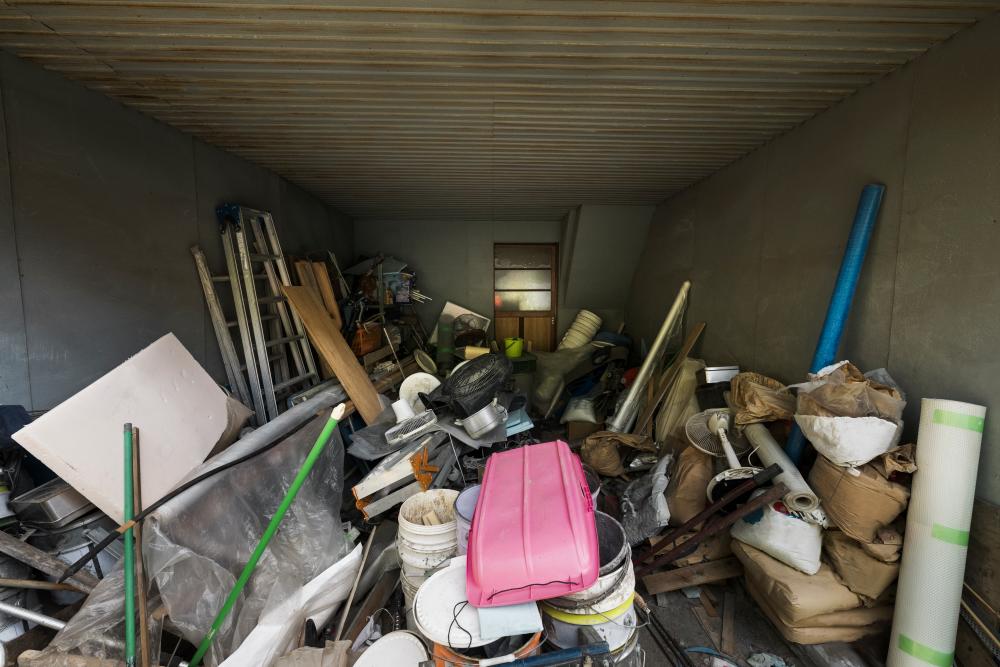PETALING JAYA: Throughout their three years of marriage, Nur Aina Hamdan, 27, discovered that her husband Adam (not his real name) has a strong inclination to hoard items and refuses to them even when they are no longer usable.
Nur Aina said despite neatly storing them in boxes, it became overwhelming as each passing year resulted in an increasingly bigger pile of “useless” items that have stacked to the ceiling.
“One day, I stumbled on a fifth form exercise book and when I asked why he didn’t throw it away, he said he felt attached to it. “He once got very upset when I discarded his broken tennis racket.”
At first, Nur Aina believed her husband was just a collector, but she found it odd when he started hoarding broken items as well.
She decided to seek professional help after reading articles about hoarding disorder.
“I persuaded my husband to consult with a mental health specialist. Accepting the reality was difficult for him, but with persuasion and some firmness, I convinced him to get help.”
University Putra Malaysia head of Psychiatry and Malaysian Educational and Psychological Well-being Society president Dr Chong Seng Choi said from a medical perspective, hoarding is characterized by a persistent difficulty in letting go of possessions, regardless of their value.
Chong noted the hoarding disorder was initially listed as a subtype of obsessive compulsive disorder (OCD), but the 5th edition of the Diagnostic and Statistical Manual of Mental Disorders now recognizes it as a distinct psychiatric condition.
Additionally, he said hoarding appears to begin early in life and spans into adulthood.
“Symptoms of hoarding may first emerge between the ages of 15 and 19. It begins to disrupt the individual’s daily life by his mid-20s, and results in clinically significant impairment by his mid-30s.
“For many, hoarding becomes more problematic as one gets older, and is three times more common in adults aged 55 to 94.”
Chong said people who hoard items often do not realize it is a problem or understand its impact on their lives and those around them.
“Hoarders often have strong beliefs about acquiring and discarding things. They think, ‘I may need this someday’ or ‘keeping this will make me happy,‘” he said.
Chong stressed hoarding disorder can be linked to other mental health issues, such as anxiety or OCD. Some 75% of hoarders also have other mood or anxiety disorders, with depression being the most common at 30-50%.
Meanwhile, Solid Waste and Public Cleansing Management Corporation (SWCorp) director Ummi Kalthum Shuib said hoarding practices are prevalent within the community.
“Since 2021, SWCorp has found about 12 premises in Kuala Lumpur that hoarded various items. Around 11 communities lodged complaints to us between 2021 and 2024. They involved 15 hoarding cases, with five of them in Taman OUG.
“The Segambut community filed the first complaint this year regarding hoarding activities. Subsequently, I visited the location and attempted to contact the hoarder, but she was not present and we couldn’t access the house.
“Surprisingly, by Jan 18, the family of the hoarder cleared the house, and I suspect this was a result of a viral video I posted,” she said.
Ummi Kalthum said SWCorp can act against hoarders under Section 75 of the Solid Waste and Public Cleansing Act 2007 for causing a nuisance, posing a threat to health, or being offensive to the neighborhood.
Those found guilty can be fined between RM10,000 and RM100,000, or be imprisoned for a term not exceeding six months, or both.
“I encourage everyone to be the eyes of the community to ensure cleanliness is everyone’s responsibility.
“Hoarding can encroach on the lives of others and endanger those living close to them,” she said.









